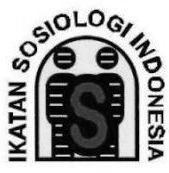Spiral of silence theory dalam Pemilihan Kepala Daerah
Abstract
Pemilihan kepala daerah yang bersifat langsung, mempengaruhi para calon berusaha mendapatkan popularitas untuk mendulang suara dengan melakukan kampanye atau pengenalan diri ke masyarakat dengan media. Pengenalan diri melalui media digunakan untuk membangun persepsi positif publik akan dirinya. Media menjadi alat yang digunakan dalam mengarahkan pengetahuan dan sikap masyarakat untuk menentukan pilihan. Pada penelitian ini, bertujuan mengetahui bagaimana konsep spiral of silence theory memandang bahwa orang-orang yang memiliki sudut pandang minoritas mengenai isu-isu publik akan tetap berada pada kondisi suara mereka akan dibatasi. Metode penelitian yang digunakan adalah yang digunakan adalah studi kualitatif dengan survey langsung dan studi literatur. Dari hasil studi didapatkan bahwa ada 3 asumsi dari spiral of silence theory bahwa masyarakat akan mengancam individu yang menyimpang dengan adanya isolasi; perasaan takut akan isolasi menyebabkan individu untuk setiap saat mencoba iklim opini; perilaku publik dipengaruhi oleh opini publik. Pembangunan opini publik melalui media akan membangun iklim ganda dari opini (dual climates of opinion) yaitu iklim yang dipersepsikan secara langsung oleh populasi dan iklim dari liputan media. Pada kondisi tersebut the train test dapat dilakukan untuk menguji sejauh mana orang akan mengemukakan opini mereka, dengan mengajukan beberapa tema percakapan kepada orang lain, jika terlihat interest dan mengikuti alut pertanyaan maka dianggap ada ketercapaian pembanguna opini publik. Pada orang-orang yang bertahan tidak mau mengemukakan opininya memilih menjadi the hard core. The hard core merupakan kelompok yang yang tetap berada pada titik akhir dari proses spiral of silence tanpa memperdulikan ancaman isolasi. Kondisi the hard core ditunjukkan dalam sikap diam, tidak memilih apapun tanpa menunjukan sikap agresi kepada lawan politik yang tidak dipilihnya.
Kata Kunci : Spiral of silence theory, the train test, the hard core
Abstract
Direct regional head elections affect candidates trying to gain popularity to gain votes by campaigning or introducing themselves to the public with the media. Self-recognition through media is used to build a positive public perception of him. Media becomes a tool used in directing the knowledge and attitudes of the community to make choices. In this study, it aims to find out how the concept of a spiral of silence theory views that people who have a minority viewpoint on public issues will remain in the condition of their voices to be limited. The research method used is the qualitative study with direct surveys and literature studies. From the results of the study it was found that there are 3 assumptions of the spiral of silence theory that society will threaten individuals who deviate in the presence of isolation; fear of isolation causes individuals to at any time try the climate of opinion; public behavior is influenced by public opinion. The development of public opinion through the media will build dual climates of opinion, namely the climate that is directly perceived by the population and the climate of media coverage. In these conditions, the train test can be done to test the extent to which people will express their opinions, by proposing several conversational themes to others, if interest is seen and following questions, then there is an achievement of the development of public opinion. People who persevere do not want to express their opinions choosing to be the hardcore. The hardcore is a group that remains at the end point of the spiral of silence process regardless of the threat of isolation. The condition of the hardcore is shown in silence, not choosing anything without showing an attitude of aggression to political opponents who are not chosen.
Key word : Spiral of silence theory, pilkada
Full Text:
PDFReferences
Baldassare, M., Katz, C. 2006. Measures of Attitude Strength as Predictors of Willingness to Speak to The Media. Journalism and Mass Communication Quarterly, 73(1), 147-158.
Glynn, C., McLeod, J. 1985. Implication of the spiral silent teoryfor communication publikk communication. In political comincation and publik opinion research. In Political Yearbook, edited by K. R. Sanders, L.L. Kaid, and D. Nimmo, 43-65. Carbondale : Southern Illinois University Press.
Glynn, Caroll J., Andrew F. Hayes, James Shanana. 1997. Perseived support for one opinions and willingness to speack out : a metal analysis of survey studies on the spiral of silence. Publik Opinion of Quarterly 61, 3 : 452-463
Kennamer, J.D. 1990. Self-serving biases in perceiving the opinions of others : Implications for the Spiral of Silence. 17(3).
Moy, P., Domke, D. & Stamm, K. 2001. The Spiral of Silence and Publik Opinion on Affirmative Action. Journalism and Mass Communication Quarterly, 78(1), 7-25.
Noelle-Neumann, E. 1983. The Effect of Media on Media Effects Research. Journal of Communication, 33(3): 157-65
Noelle-Neumann, 1985. Information und Politik. März. 41(3):67-71.
West, R. & Turner, L.H. 2004. Introducing Communication Theory. New York : McGraw Hill.
Zhang, W. 2010. Enlightenment of “The Spiral of Silence” Theory to Enterprise Crisis Management. International Journal of Business and Management, 5(8), 191-195.
Noelle-Neumann, E. 1974. The Spiral of Silence: A Theory of Public Opinion. Journal of Communication, 24 (2), 43-51.
Rohim, S. 2009. Teori Komunikasi: Perspektif, ragam, & Aplikasi . Jakarta: PT Rineka Cipta.
Saverin, J.W., & Tankard, J.W.Jr. 2005. Teori Komunikasi: Sejarah, metode, dan terapan di dalam media masa. Jakarta:Kencana Prenanda media Group.
Stephen W. Littlejohn. 1996. Theories of Human Communication . New Jersey: WadsworthPuublication.
West, R. , Tunner L. H. 2008. . Pengantar Teori Komunikasi Analisis dan Aplikasi. Jakarta : Salemba Humanika
DOI: http://dx.doi.org/10.30870/hermeneutika.v4i1.4819
Refbacks
- There are currently no refbacks.
Copyright (c) 2019 Hermeneutika : Jurnal Hermeneutika
Published by Department of Sociology Education, Faculty of Teacher Training and Education, Universitas Sultan Ageng Tirtayasa
Jl. Ciwaru, No. 25, Serang, Banten
[email protected]
Jurnal Hermeneutika is licensed under a Creative Commons Attribution 4.0 International License
Hermeneutika : Jurnal Hermeneutika Indexed by:



.png)









